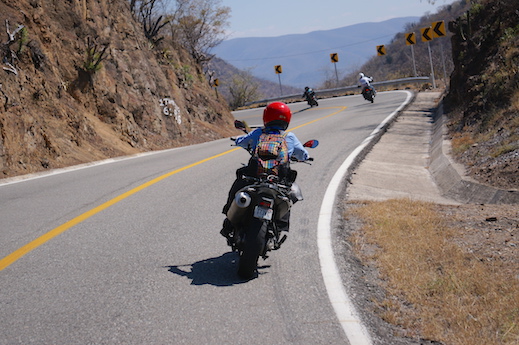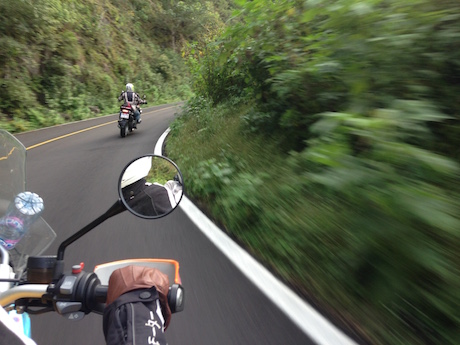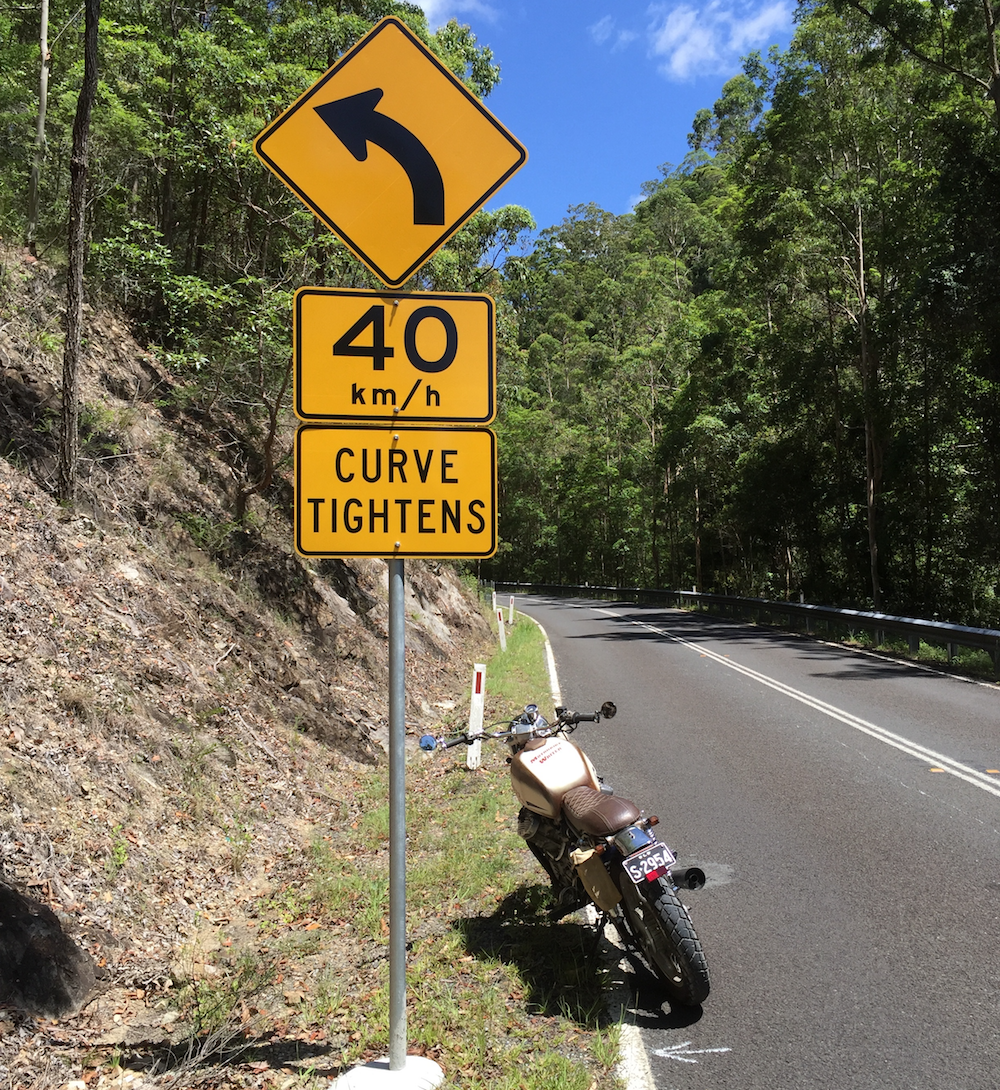It’s one of those heart-in-the-mouth moments when the corner suddenly tightens up and you’re running out of cornering clearance and room to complete the turn.
We’ve all had that moment.
In the best-case scenario, we get a fright.
In the worst-case scenario it can lead to running off the road, into oncoming traffic or low-siding the bike.
How you deal with the corner really comes in three parts: avoiding being caught by surprise, positioning your bike correctly and dealing with a tightening radius.
AVOID BEING CAUGHT
Don’t ever get in the situation where a bend surprises you.
If you’ve ridden the road before, you should file a mental note of which turns tighten up so you are better prepared next time.
A mental note could consist of a sign on approach, an unusual tree or some other landmark.
Sings like this would, of course, be welcome!
However, if it’s a new section of road you’ve never ridden before, survey the line markings or the road edges for clues of the radius.
If the outside line or edge of the road is getting closer to the centre line or inside edge of the bend, then it is tightening.
Don’t commit your lean angle and speed to this corner until you see the road edges moving further apart again, which is the clue it is opening up again.
Some corners can be blind and you may need to look for other clues such as the brake lights of the vehicle in front, overhead lines that suddenly turn or a diminishing tree, hedge or fence line.
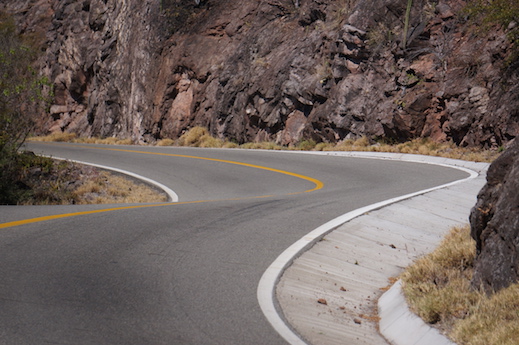
POSITION YOUR BIKE
If you’ve determined the radius is tightening, position your bike as wide as possible while washing off speed with brakes and downshifts.
A wide approach to the corner will make your apex further around the bend and alert you earlier to a tightening radius.
Keep looking at the end of the corner, that point where the “lines” are close together. Don’t look at the other side of the road or the bushes where you think you might end up … or you will.
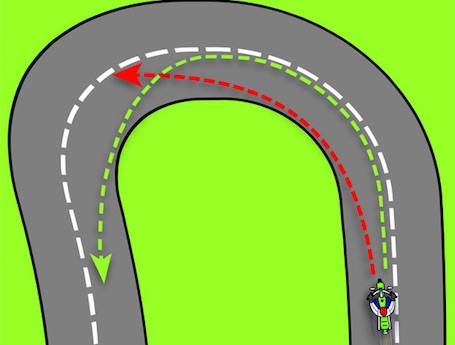
HANDLING THE CORNER
Even so, you might still get caught out by long bends that tighten unexpectedly toward the end, so you may need to make some mid-corner corrections.
If you’ve been holding some throttle, don’t shut it down. Hold it neutral or slightly decrease the throttle.
Don’t try downshifting, either, unless you are really smooth at matching engine and ground speeds or the rear wheel may lock up and flick you over the high side.
Instead, push a little more on the inside handlebar which is a counter-steering input that will lean your bike further. You’ll be surprised how far you can lean the bike without sliding or falling off.
You can also add a little more rear brake which will pull the bike into a steeper lean as well as slow it down.
Don’t touch the front brakes, either, unless you are really smooth as it may cause a low slide or stand the bike up again which will run you wide.
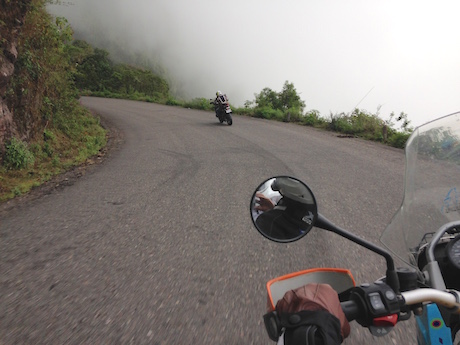
OVER-COMMITTED
If you’ve overcommitted and have run out of ground clearance, you may be in a fair bit of trouble.
The only thing to do is to smoothly squeeze more front and rear brake to slow you down as much as possible while keeping your lean angle stable.
Keep looking at the corner exit and you just may wash off enough speed to make it around the corner.
And then you can set up for the next one!
